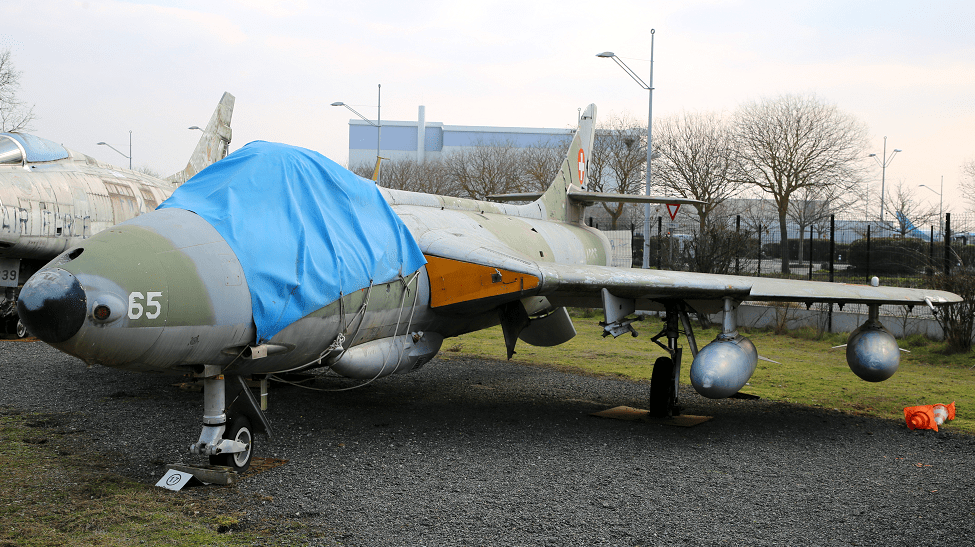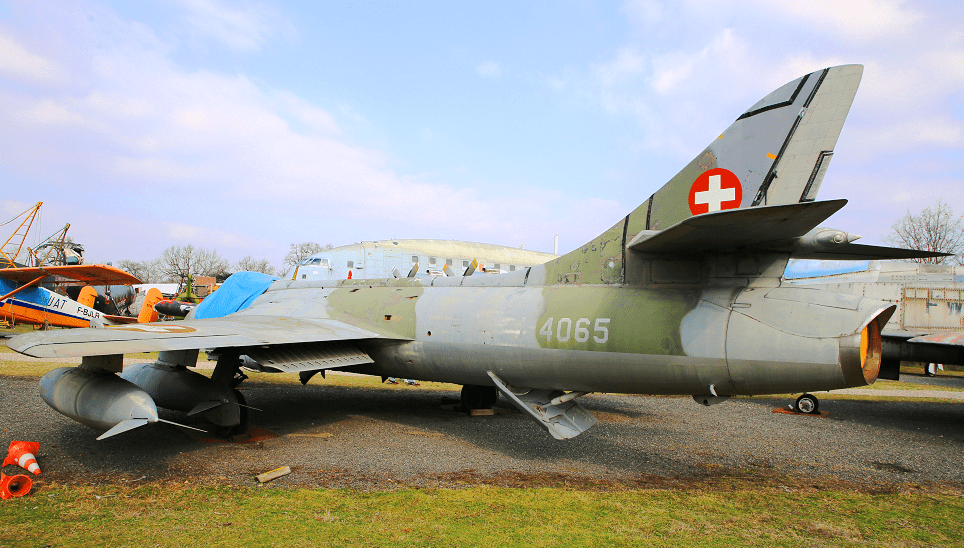Hawker Hunter (J-4065): transonic British jet-powered fighter aircraft
During 1945, the Second World War came to a close and a new postwar Labour government, headed by Clement Attlee, came to power in Britain. The incoming Attlee government’s initial stance on defence was that no major conflict would occur for at least a decade, and thus there would be no need to develop or to procure any new aircraft until 1957.
In accordance with this policy, aside from a small number of exceptions such as what would become the Hawker Sea Hawk for the Royal Navy, the majority of Specifications issued by the Air Ministry for fighter-sized aircraft during the late 1940s were restricted to research purposes. Aviation author Derek Wood refers to this policy as being: “a fatal error of judgement which was to cost Britain a complete generation of fighters and heavy bomber aircraft”.
Hawker Aircraft Limited was a British aircraft manufacturer that was responsible for some of the most famous products in British aviation history.
Hawker had its roots in the aftermath of the First World War, which resulted in the bankruptcy of the Sopwith Aviation Company. Sopwith test pilot Harry Hawker and three others, including Thomas Sopwith, bought the assets of Sopwith and formed H.G. Hawker Engineering in 1920.
In 1933, the company was renamed Hawker Aircraft Limited, and it took advantage of the Great Depression and a strong financial position to purchase the Gloster Aircraft Company in 1934. The next year, it merged with the engine and automotive company Armstrong Siddeley and its subsidiary, Armstrong Whitworth Aircraft, to form Hawker Siddeley Aircraft. This group also encompassed A. V. Roe and Company (Avro).
The company continued to produce designs under the “Hawker” name as part of Hawker Siddeley Aircraft, which from 1955 was a division of Hawker Siddeley Group. In 1963, the “Hawker” brand name was dropped, along with those of the sister companies; the Hawker P.1127 was the last aircraft to carry the brand name.
The Hawker legacy was maintained by the American company Raytheon, which produced business jets (including some derived from the 125, whose original design dated back to de Havilland days) under the “Hawker” name. This was the result of purchasing British Aerospace’s product line in 1993. The name was also used by Hawker Beechcraft after Raytheon’s business jet interests (Hawker and Beechcraft) were acquired by investors and merged.












